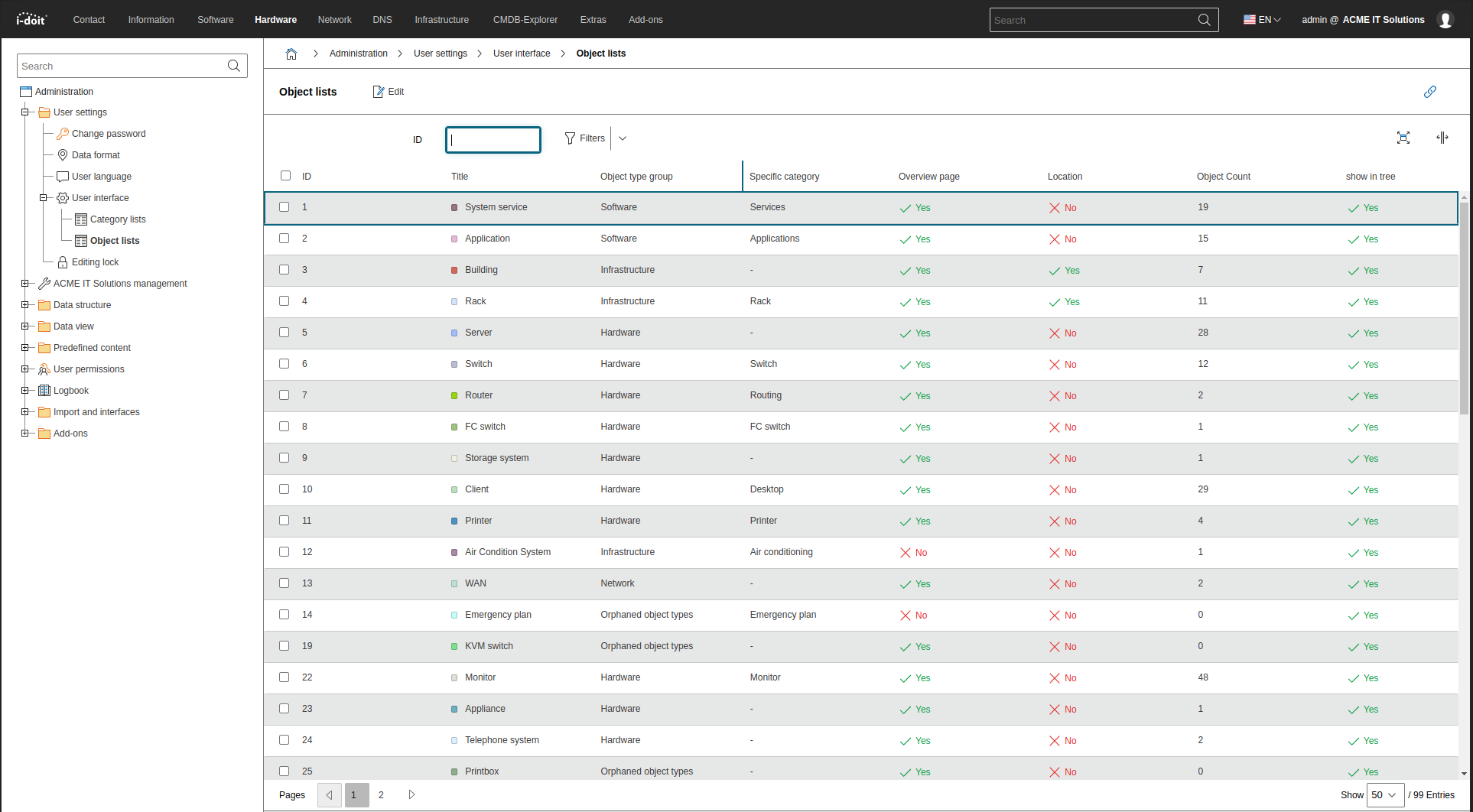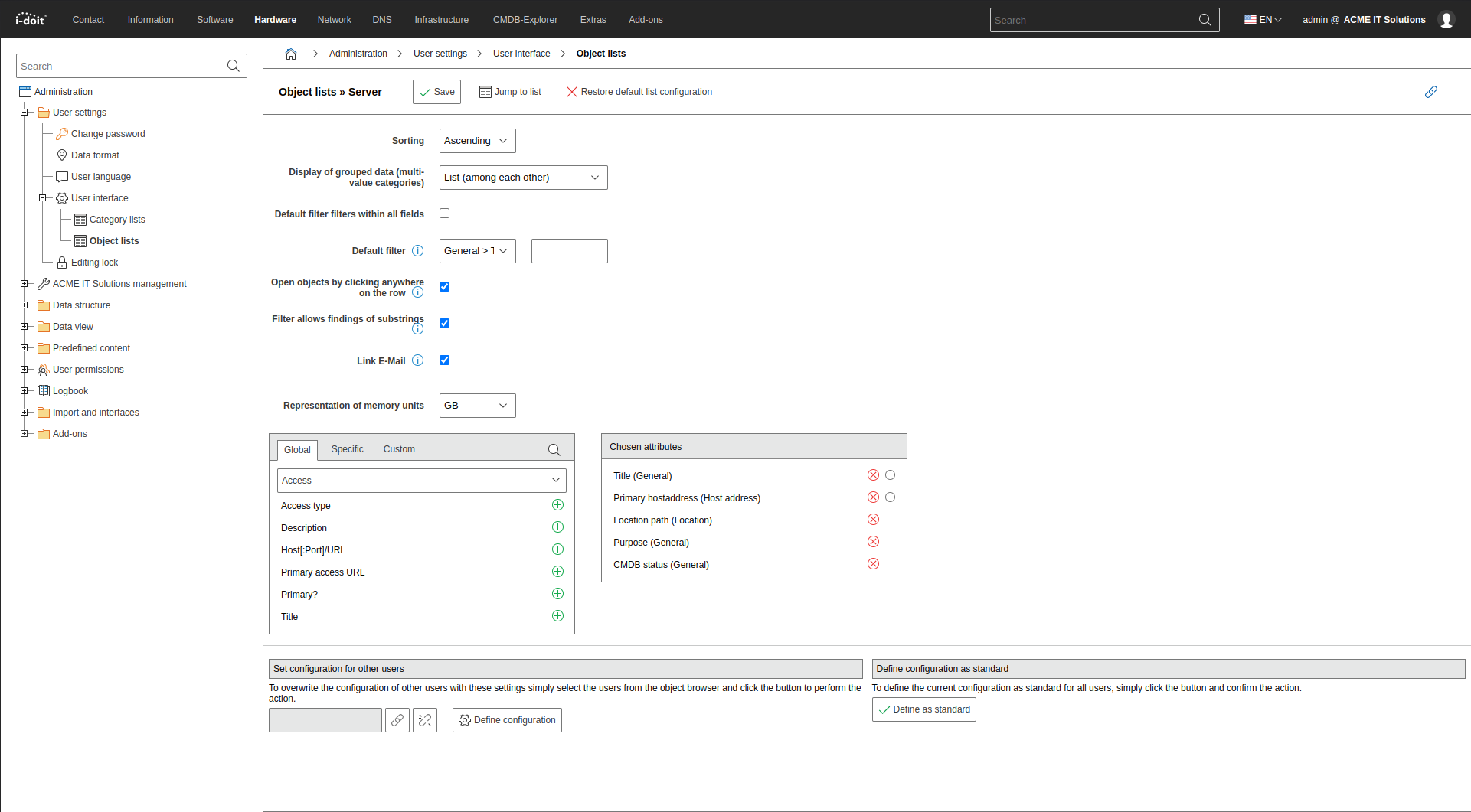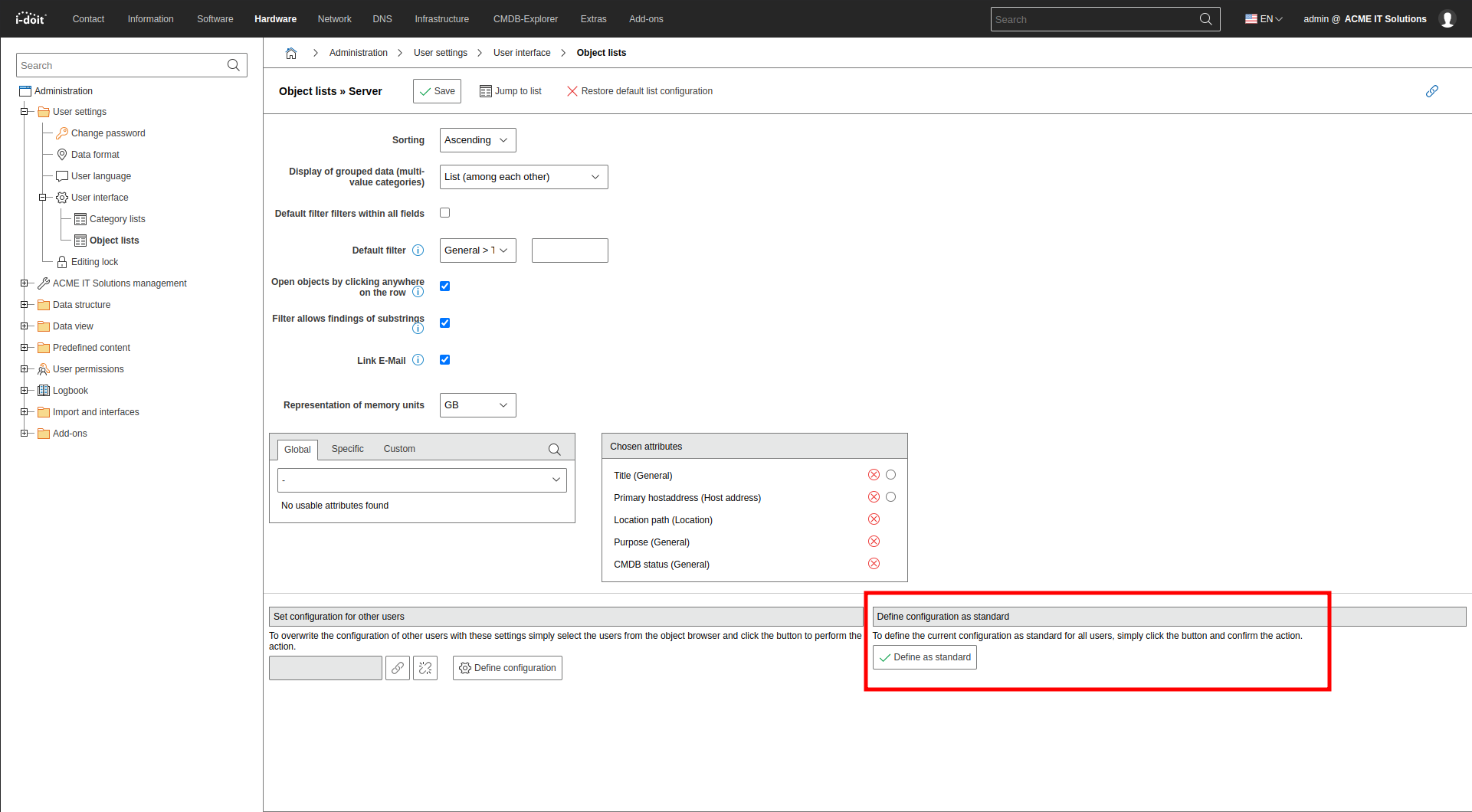Configuration of the Object list view#
You can configure the view of the object lists individually per list and per user.
Accessing the configuration#
You can reach the configuration for the corresponding object list with the 
Attribute selection#
Similar to the report manager you can define the columns via the selection of the category and the included attribute.
First you select a global, specific or custom category in the drop-down menu. You can filter the list of categories with a text field.
When selecting a category, the attributes which can be defined as a column are displayed. Add an attribute to the selected attributes with a click on the 
You can manipulate the list of selected attributes and change their order per drag and drop. The higher the object is in the selection, the further it is shown on the left of the object list. Remove an attribute with the 
Restrictions
The following restrictions apply to the selection of attributes:
- Not all attributes of all categories are available.
- The number of attributes is limited to 10.
Attributes originating from list categories (multi-valued) can be presented in different ways. With the drop-down menu for the presentation of grouped data you can display the attributes either comma-separated in parallel or as a list one below each other. An example is the Host addresses attribute of the Host address category.
Tip
In the default installation of i-doit the ID is displayed in each object list. As it is not relevant for conventional use, you can remove the corresponding column from the lists. This makes also sense for reasons of clarity.
Performance
Object lists with a great number of attributes may lead to a reduced performance. Should you observe a loss of performance, decrease the number of selected attributes or expand your system resources.
Presort columns#
You can also specify with which sorting the object list is to be loaded. Beside some attributes you can also click a selection button. Determine if the selected attribute should be sorted in an ascending or descending order in the Sorting drop-down menu.
Without defined sorting the objects are sorted by their ID.
Restrictions
The following restrictions apply to the sorting of attributes:
- Not all attributes can be sorted.
- Subsequent sorting with the column headers is not possible with an object list with more than 10.000 objects. You can modify this restriction.
Affecting filtering#
You can filter an object list already during loading. Select the attribute in the drop-down menu for Default filter and enter the value for filtering in the text field on the right.
If you do not want to select an attribute to be filtered each time in the list view, the filter can be set for all fields.
Different ways to open an Object#
Often a look at the object list is not enough to retrieve all required attributes. Therefore you can open an object via the list. You have two options:
- Open the object by clicking the respective row in the object list. For this purpose, select the checkbox Open objects by clicking anywhere on the row.
- Open (and edit) the object with the selection of the checkbox of an object and the Edit button.
You can activate the first option for all users and all object lists simultaneously. The button Enable to click on rows in object lists in the Administration.
Reset configuration#
Each object list has a default configuration. If you want to reset the object list to its default settings, click the Restore to [Tenant-Name] default list configuration or Restore to i-doit default list configuration button.
Set configuration as default#
When you want an object list to become the default list, click the Define as [Tenant-Name] default list configuration button in the field Define configuration as default. Object lists which have already been changed by users are also affected.
Assign the configuration to other users#
If you want to predefine a specific object list for other users, select it in the field Set configuration for other users via an Object browser. Afterwards, the selection is confirmed with the Define configuration button.
Saving the configuration#
All changes of the configuration are accepted with the Save button.
Browser Cache
Should the list view not correspond to the configuration when activating the object list, it helps to empty the cache of the web browser.
Authorization to Edit the List View#
With the user rights management you can assign rights and determine which persons or person groups will be authorized to configure the list view and preset it for other users.



